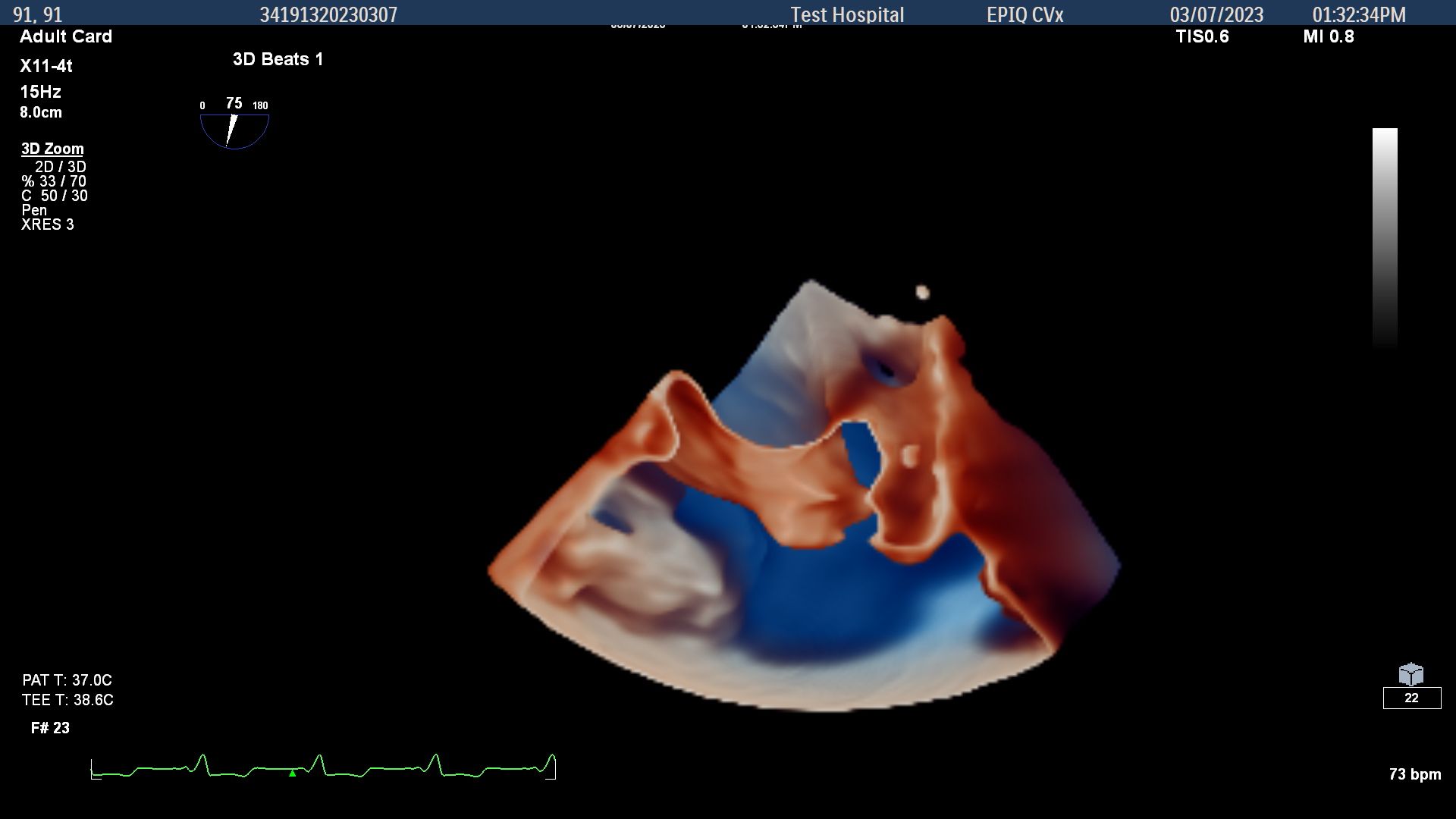FDA Clears Mini Transesophageal Echocardiography Ultrasound Transducer
Reportedly providing enhanced imaging of structural heart disease, the minimally invasive X11 4t Mini 3D TEE ultrasound transducer facilitates use of the technology in smaller pediatric patients as well as high-risk ICU patients.
The Food and Drug Administration (FDA) has granted 510(k) clearance for the X11 4t Mini 3D TEE transducer, a device that may broaden the use of transesophageal echocardiography (TEE) to patients in intensive care units (ICUs) and smaller pediatric patients.
The enhanced imaging capability with three-dimensional TEE in assessing structural heart disease can help save lives, according to Philips, the manufacturer of the X11 4t Mini 3D TEE transducer. The company added that the technology can also be beneficial for minimally invasive heart surgery cases.
Enhanced three-dimensional imaging with the newly FDA-cleared X11 4t Mini 3D TEE transducer may bolster assessment of structural heart disease and benefit patients undergoing minimally invasive heart surgery. (Image courtesy of Philips.)

Noting the device’s pill-shaped design and a 35 percent smaller size than other TEE transducers, Philips said the X11 4t Mini 3D TEE transducer enables clinicians to utilize the technology for ICU patients as well as smaller pediatric patients.
“In many of our smallest patients undergoing complex intracardiac procedures like valve repairs, 3D TEE will give us a new and much needed perioperative tool,” noted Brian Soriano, M.D., FASE, a pediatric cardiologist at Seattle Children’s Hospital.
“For example, the X11-4t (Mini 3D TEE transducer) can help us visualize atrioventricular valves en face. In many cases, this is a view that is difficult to achieve with traditional 2D TEE. 3D TEE will also be a more effective tool to communicate with the surgeons and will enable us to give good ‘surgeon views’ of intracardiac structures.”
What New Research Reveals About Novice Use of AI-Guided Cardiac Ultrasound
April 4th 2025In a study recently presented at the American College of Cardiology (ACC) conference, researchers found that novice use of AI-guided cardiac ultrasound after an AI-enabled electrocardiogram increased the positive predictive value for reduced left ventricular ejection fraction (LVEF) or aortic valve stenosis by 33 percent.
The Reading Room: Artificial Intelligence: What RSNA 2020 Offered, and What 2021 Could Bring
December 5th 2020Nina Kottler, M.D., chief medical officer of AI at Radiology Partners, discusses, during RSNA 2020, what new developments the annual meeting provided about these technologies, sessions to access, and what to expect in the coming year.